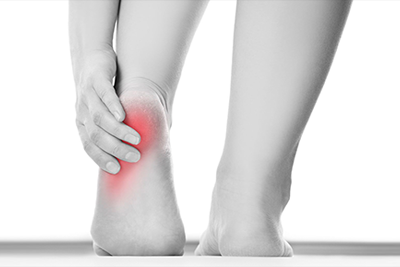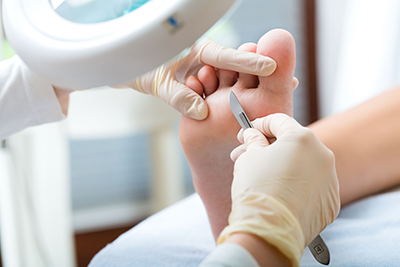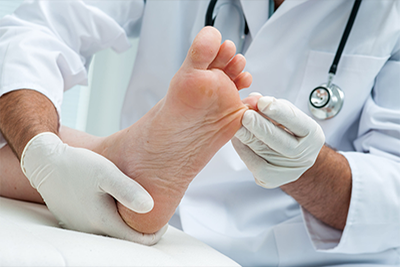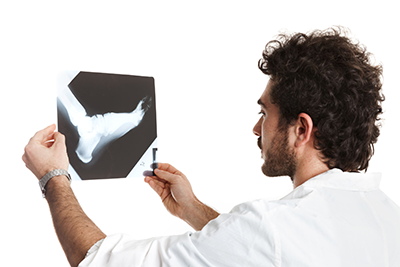Toe and Forefoot FracturesA fractured bone in your forefoot (metatarsals) or in one of your toes (phalanges) is often painful but rarely disabling. Most of the time, these injuries heal without operative treatment.
SYMPTOMS
Pain, swelling, and bruising are the most common signs of a fracture in the foot. If you have a broken toe, it may be painful to walk. If the pain, swelling, and discoloration continue for more than two or three days it is time to seek medical attention. If you delay getting treatment, your injury could be compounded with persistent foot pain and arthritis. You could also change the way you walk (your gait), which could lead to the formation of painful calluses on the bottom of your foot, and pain in the knee, hips, back and neck DIAGNOSIS
You will need to know your medical and activity history. If an accident occurred, you doctor will want to know the details. He may order an x-ray or CT scan to evaluate the fracture and look for loose bone fragments. TREATMENT
Apply an ice pack and elevate your foot above the level of your heart. Nonsteroidal anti-inflammatory medicines like ibuprofen or naproxen may help relieve pain and swelling, but may inhibit bone healing. Try not to put weight on your foot until after you see a doctor. NONSURGICAL TREATMENT Foot fractures can be debilitating. Our goal is to get you back into your daily life as quickly and as safely as possible, while creating a positive healing experience for your foot. Following a treatment plan can speed the restoration of your abilities and help you prevent further problems in the future. You should rest. Take a break from the activity that caused the foot fracture. It typically takes 6 to 8 weeks for most fractures to heal. Use protective footwear to reduce stress on your foot and leg. You may need a cast on your foot to keep your bones in a fixed position, and to remove strain on your involved leg. Crutches may be recommended to keep weight off of your foot until it is healed. SURGICAL TREATMENT Some fractures require surgery to heal properly. In most cases, this involves supporting the bones by inserting a type of fastener. This is called internal fixation. Pins, screws, and/or plates are most often used to hold the small bones of the foot and ankle together during the healing process. Some fasteners are meant to be a permanent fixture, while others are only temporary. Healing time varies with the extent of surgical rehabilitation. You may need crutches for a period of time, as well as physical therapy. |
Additional Services |
Additional Conditions and Treatments
Book Your Appointment Today |









